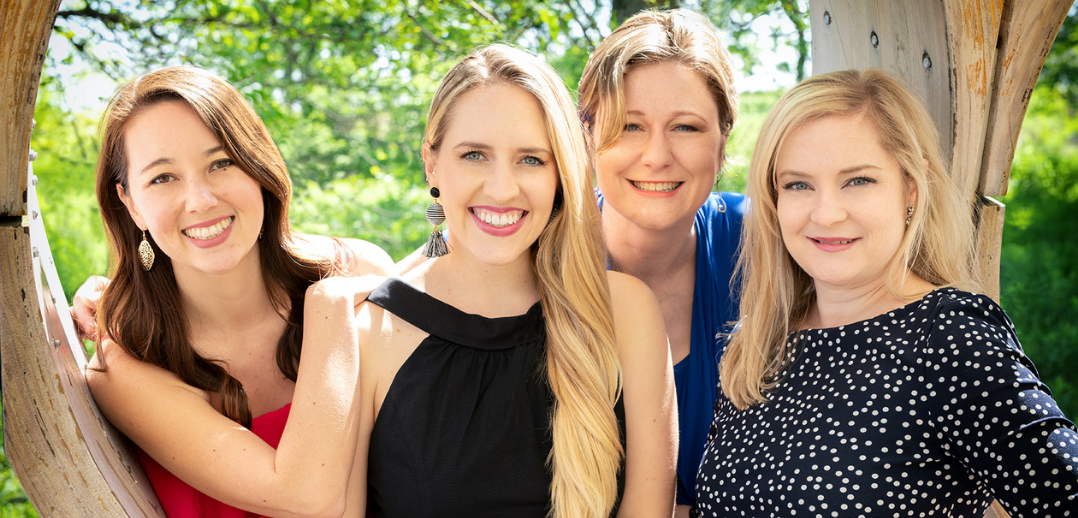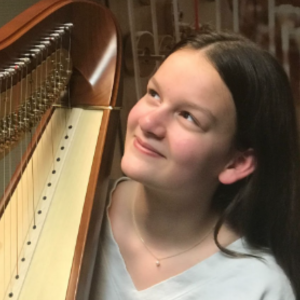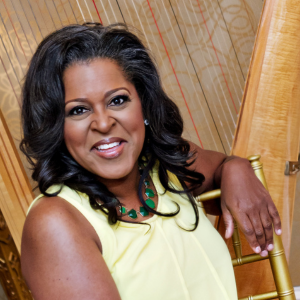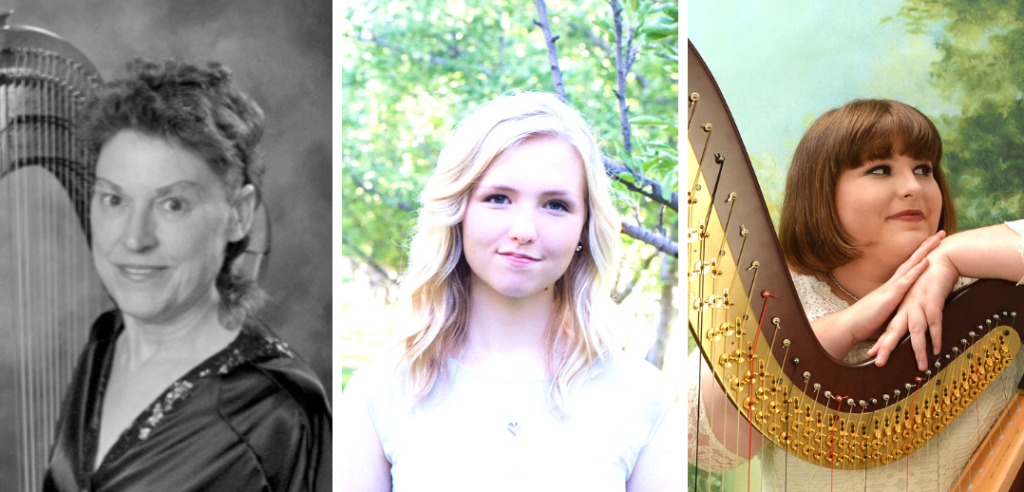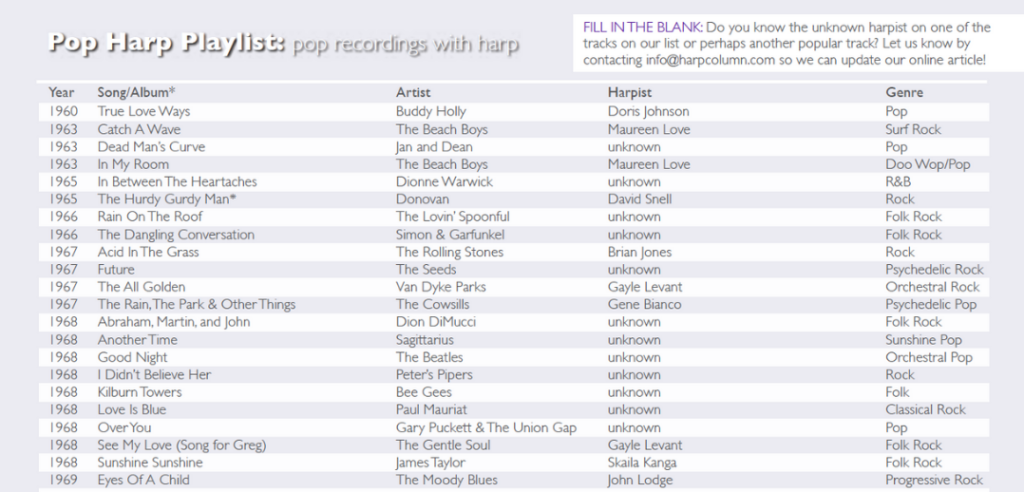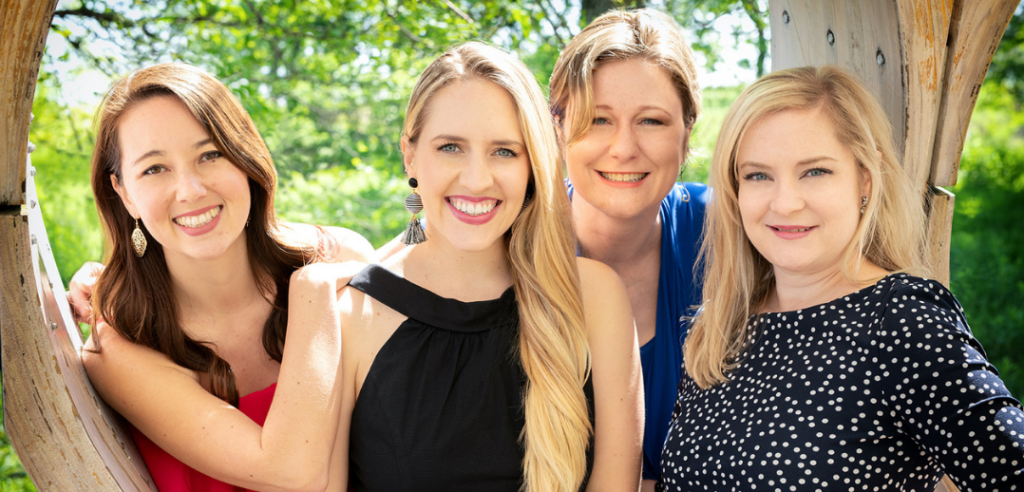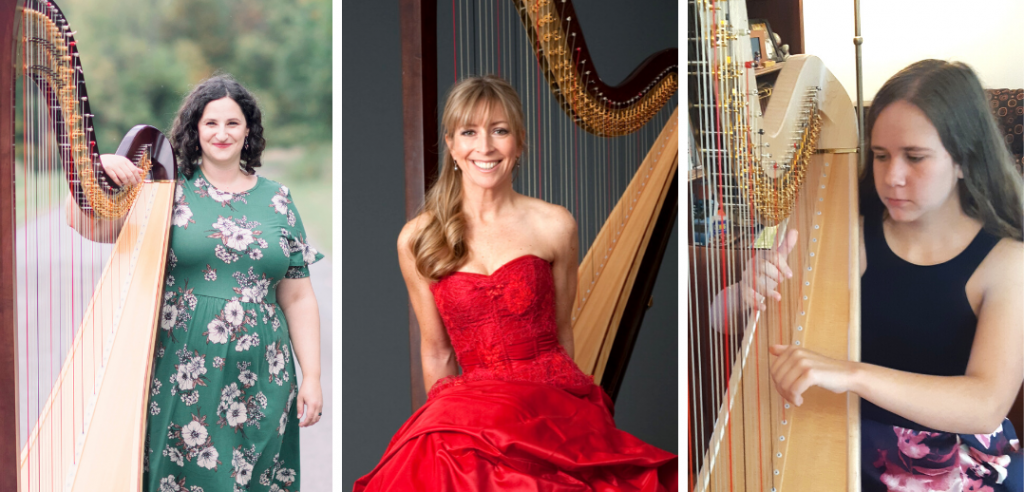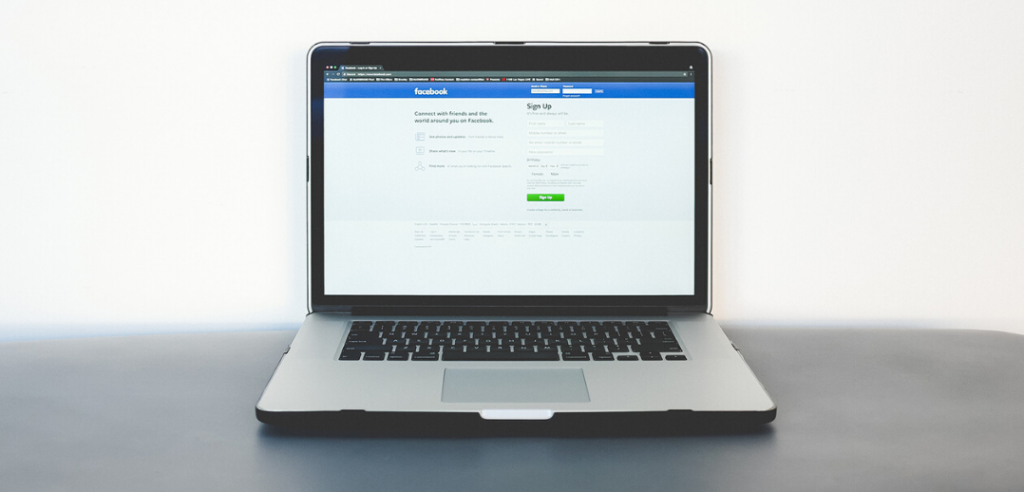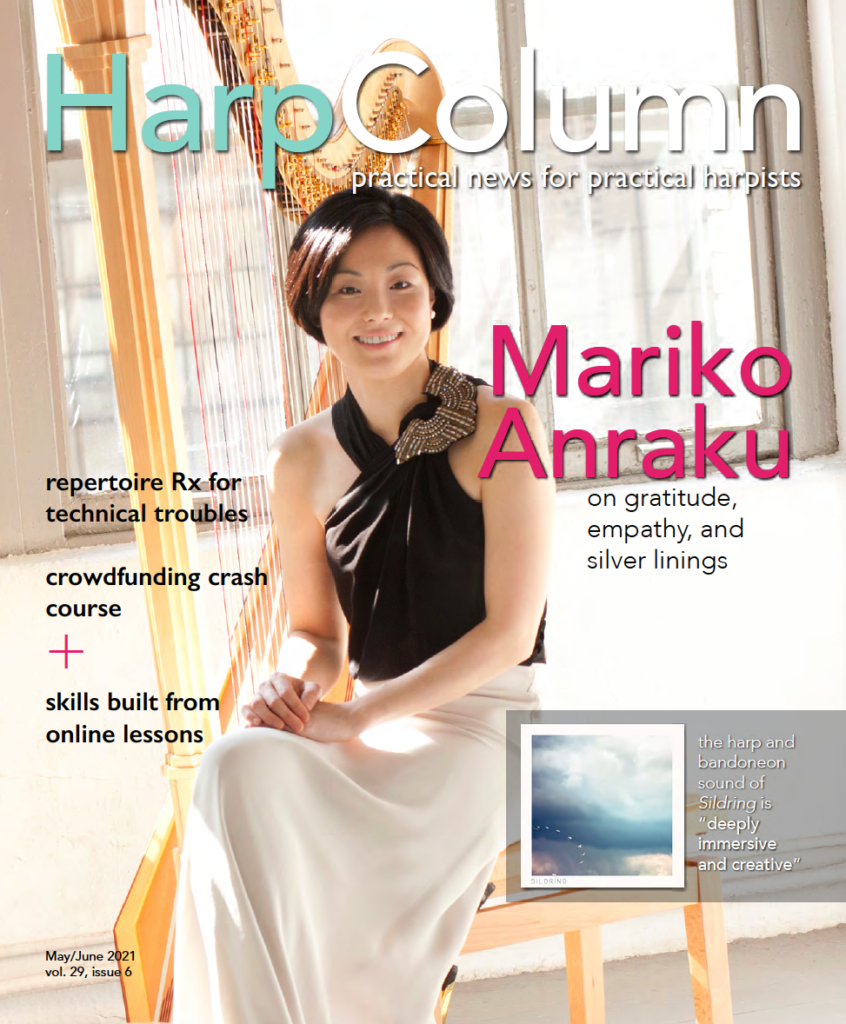This article extra is part of Crowdfund Your Passions in this issue.
See how several professional harpists have successfully navigated their crowdfunding dreams to success.

Amy Turk has gained millions of views on YouTube with videos featuring her unique arrangements and percussive techniques. Her online presence is consistently growing, and she utilizes Patreon to supplement her income.
Date started on Patreon: October 2017
Tiers and rewards offered to backers: “I offer three:
• $1: general updates, behind-the-scenes views, a credit in YouTube music videos.
• $5: Early access to monthly YouTube uploads, plus rewards in $1 tier
• $10: Early access to short Instagram videos, plus all other rewards
I am making a transition to creating original music at the moment, so that I can provide demo audio and early access for patrons in the top two tiers.”
How do you promote your Patreon? ”Primarily through YouTube—I use cards during the video and have a link on the end screens and descriptions to direct people to Patreon. I also mention it sometimes on Facebook and Instagram, but this can affect the reach the post has, especially on Facebook where anything outside of Facebook significantly limits who can see it.”
Why did you initially turn to crowdfunding? “YouTube is a great platform in many ways but it is not possible for most creators to make a living solely from ad revenue (due to the YouTube algorithm). Patreon is a popular choice for YouTubers as it allows the creation of communities who are really invested in your work to subscribe on a monthly basis, and puts the creator in control of what they offer to patrons in a way that is financially more clear and direct.”
How has crowdfunding helped you, aside from monetary benefits? “I am naturally a people pleaser and have spent much of my career trying to please and/or impress other people, rather than stopping and really asking myself what I want out of this. In the last couple of years, I have tried to change that, and my patrons have been a great source of support.
Last year when I announced I was going to start releasing original music, their response was so heartwarming and encouraging. It reminded me that they are there because they find me interesting as an artist (and as a person!), and it was something I didn’t realize I needed to hear until I was brave enough to make that announcement. It has given me an opportunity to see Patreon as a way of tracking the commitment I’m making to my own artistic journey, as well as the commitment I have made to my patrons.”
Anything more you would like readers to know: “Building up a community of fans on a site like Patreon requires consistent work, and sensible, achievable goal-setting, which is something I am still learning all about. It’s a great way to connect with people who really care about what you do, and a great way to keep yourself honest about what you really want out of creating. Although it can feel like pressure and it is a commitment, having patrons to keep updated and provide some exclusive content to can be a great way to motivate yourself to keep going in a way that is fulfilling and authentic to you.”

Christy-Lyn of Cape Town, South Africa, has created a community of harpists on Patreon who learn the harp together through her YouTube videos and through her website.
Date started on Patreon: “I started my Patreon in January 2014 to give people an opportunity to support me as a performer. In January 2018, I added harp education content and eventually focused completely on that.”
Tiers and Rewards offered: “When I started I had the following tiers:
•Community, behind the scenes, exclusive livestream concerts
•MP3 downloads of songs I was uploading on YouTube
• Skype meetups for people who enjoyed my music
• Downloads of my albums
• One MP3 of an original harp improvisation per month
As I moved towards harp education, I structured my Patreon as a monthly subscription to educational content. I started out by adding a tier where people received a sheet music download of a new piece every month and another tier for a monthly harp circle meetup on Zoom. Now my main focus is monthly online courses to learn a song in detail.”
How do you promote your Patreon? “I used to avoid promoting my Patreon page when it was just an opportunity to support me. I felt like it was asking people to pay out of the goodness of their heart and that was difficult for me. Now that I’m focusing on harp education and I truly believe that my content benefits harp learners, it’s much easier to promote. I upload a monthly high-production music video to YouTube, and I suggest that people learn the piece by purchasing an online course, either on my website or for a lower price through Patreon. I also talk about my online courses and Patreon on my email list.”
Why did you initially turn to crowdfunding? “I was creating so much free content online that I wanted to give people an opportunity to support me so I could continue to do it more sustainably. I also knew that if I had support I would be able to spend more time creating even more valuable content, and I would be able to increase the production quality. The support from people on Patreon enabled me to leave my day job and start doing music full time.”
How has crowdfunding helped you, aside from monetary benefits? “I used to spend a lot of time driving around to gigs and my day job. Patreon enabled me to work from home. It has also enabled me to provide jobs for almost every member of my family now. My business is not solely funded by Patreon, but it’s one of the major sources of income. Creating monthly content has given me a deadline and accountability for being consistently creative. I’ve been forced to create new original content every month. It’s enabled me to be in touch with the real people that I’m serving. It’s a vibrant community, and people make friends with each other and with me.”
Anything more you would like readers to know? “I actually closed my Patreon page at the end of February 2021. I’ve grown to the point where I can sustain my own membership platform on my website. Patreon is what helped me get there.
Keep in mind that Patreon or Kickstarter don’t come with an automatic audience. You have to have your own way of growing an audience that wants to give you money.
Make sure that the rewards are truly helpful. Don’t just pick something you think is a good idea. Experiment and see what people get excited about before you spend lots of time creating content that people actually don’t want to pay for. Choose rewards that are easily scalable. If your community grows, you don’t want to be trapped spending more and more time fulfilling rewards. Be careful about what you commit to doing every month. When I had 20 patrons I was working just as hard as I was when I got to 200 patrons. You have to be willing to potentially spend years working consistently before you get to the point of making a sustainable income.”
The Chicago Harp Quartet (pictured above) was founded by harpists Marguerite Lynn Williams, Julie Spring, Catherine Yom Litaker, and Emily Granger in 2012 and has since established itself as one of the leading harp ensembles in the U.S. Using Kickstarter, it successfully funded its debut album and a commission from Bernard Andrès back in 2013.
Project funded by Kickstarter: “The Chicago Harp Quartet was fortunate enough to fully fund our debut album and a commission from Bernard Andrès from Kickstarter.”
Dates of Kickstarter campaign: July 24 – August 27, 2013
Tiers and rewards offered: “We offered 11 different tiers for pledges ranging from $5–$2,000. The thank you or reward for a contribution included acknowledgment on our website, exclusive access to project updates, digital tracks, complete digital albums, signed publicity photos, signed physical copies of the CD, CHQ t-shirts or tote bags, tickets to our CD release party held in Chicago, acknowledgment as a sponsor, benefactor, or patron in the liner notes of the CD and on our website, an invitation to a live radio performance, and even a private performance by the Chicago Harp Quartet.”
How did the Quartet promote its Kickstarter campaign? “We reached out to anyone and everyone we knew personally and professionally who might have an interest in the ensemble, or in commissioning a new work of chamber music by Bernard Andrès.”
Why did the Quartet initially turn to crowdfunding? “Crowdfunding is an essential way for ensembles to fundraise for projects such as this, especially when they can’t yet apply for grants. We were not yet a fully established nonprofit organization in 2013 and therefore not eligible for many grant opportunities which might have funded the commission.”
How has crowdfunding helped the Chicago Harp Quartet, aside from monetary benefits? “Crowdfunding did help us get started with a network of ‘backers’ who were interested and invested in the ensemble. It helped to establish our newsletter mailing list which has grown to over 2,000 people.” •






